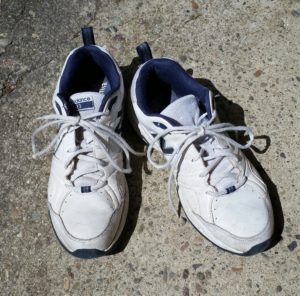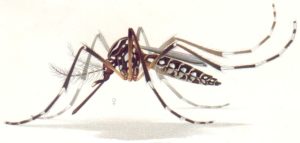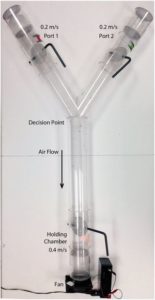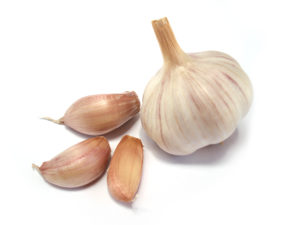 This past week there was discussion of the number of high school football players that die annually while playing football (at least 5). But the bigger risk - because it involves so many players - is the damage to brains that occurs from concussions and from just being hit in football. The response from football enthusiasts is that there are safeguards now - that football players don't play after a concussion until they "heal" (show no obvious symptoms). But do they really heal? And much of the damage is from repeated hits, without having a concussion (sub-concussive blows or hits), what about the damage from that?
This past week there was discussion of the number of high school football players that die annually while playing football (at least 5). But the bigger risk - because it involves so many players - is the damage to brains that occurs from concussions and from just being hit in football. The response from football enthusiasts is that there are safeguards now - that football players don't play after a concussion until they "heal" (show no obvious symptoms). But do they really heal? And much of the damage is from repeated hits, without having a concussion (sub-concussive blows or hits), what about the damage from that?
This study found that repeated head hits in football can cause changes in brain chemistry and metabolism, even in high school players not diagnosed with concussions. And even after the lengthy off-season (somewhere between two and five months after the season has ended)—the majority of players are still showing that they had not fully recovered. The researchers also made it clear that 2 weeks is not enough time to heal from a concussion. Scary long-term implications - what is happening to brains that never truly heal from past seasons as the players start playing in the next season? From Futurity:
High School Football: Teen Brains Don't Heal During Offseason
Brain scans of high school football players taken before, during, and after the season raise concerns they don’t fully recover from repeated head hits. The researchers used an imaging technique called proton magnetic resonance spectroscopy (1H MRS) to study the brains of 25 high school football players and compared them to the brains of teenagers involved in non-contact sports. The findings suggest repeated head hits in football can cause changes in brain chemistry and metabolism, even in players not diagnosed with concussions.
“We are seeing damage not just to neurons, but also to the vasculature and glial cells in the brain,” says Eric Nauman, professor of mechanical engineering, basic medical sciences, and biomedical engineering at Purdue University. “I was particularly disturbed that when you get to the offseason—we are looking somewhere between two and five months after the season has ended—the majority of players are still showing that they had not fully recovered.”
The 1H MRS data provide details about the blood flow, metabolism, and chemistry of neurons and glial cells important for brain function. The data also revealed a “hypermetabolic response” during the preseason, as though the brain was trying to heal connections impaired from the previous season. “We found that in the preseason for the football players in our study, one part of the brain would be associating with about 100 other regions, which is much higher than the controls,” says Thomas Talavage, professor of electrical and computer engineering and biomedical engineering and co-director of the Purdue MRI Facility.
“The brain is pretty amazing at covering up a lot of changes. Some of these kids have no outward symptoms, but we can see their brains have rewired themselves to skip around the parts that are affected.”
One of the research papers shows that knowing a player’s history of specific types of hits to the head makes it possible to accurately predict “deviant brain metabolism,” suggesting that sub-concussive blows can produce biochemical changes and potentially lead to neurological problems, which indicates a correlation between players taking the heaviest hits and brain chemistry changes.
The data shows that the neurons in the motor cortex region in the brains of football players produced about 50 percent less of the neurotransmitter glutamine compared to controls. “We are finding that the more hits you take, the more you change your brain chemistry, the more you change your brain’s ability to move blood to the right locations,” Nauman says.
“Recent proton magnetic resonance spectroscopy studies argue that the recommended two-week window of rest is insufficient for full metabolic recovery after concussion,” Nauman says. “Those returning to play prior to full recovery could incur a second concussion with symptoms and metabolic changes more lasting than the first.”

 Another excellent reason to breastfeed premature infants - to increase the odds of preventing retinopathy of prematurity (ROP), which is the reason preemies can go blind. It occurs when blood vessels in the retinas of premature infants start to grow out of control. If the abnormal growth continues, the retinas detach, and this can cause blindness.
Another excellent reason to breastfeed premature infants - to increase the odds of preventing retinopathy of prematurity (ROP), which is the reason preemies can go blind. It occurs when blood vessels in the retinas of premature infants start to grow out of control. If the abnormal growth continues, the retinas detach, and this can cause blindness. A newly published study reviewed 61 studies that looked at daily tree nut consumption on cardiovascular risk factors and found many health benefits. Tree nut (walnuts, almonds, pistachios, macadamia nuts, pecans, cashews, hazelnuts, and Brazil nuts) consumption lowers total cholesterol, LDL cholesterol, triglycerides, and ApoB, the primary protein in LDL cholesterol. It appeared that nut dose is more important than nut type in lowering cholesterol. The beneficial health effects are greater at about 60 grams (about 2 oz or 2 servings) or more nuts consumed per day, but positive health effects are also found at one serving per day. Five studies found that 100 g nuts per day lowered concentrations of LDL cholesterol by up to 35 mg/dL - an effect size comparable to some statin regimens.
A newly published study reviewed 61 studies that looked at daily tree nut consumption on cardiovascular risk factors and found many health benefits. Tree nut (walnuts, almonds, pistachios, macadamia nuts, pecans, cashews, hazelnuts, and Brazil nuts) consumption lowers total cholesterol, LDL cholesterol, triglycerides, and ApoB, the primary protein in LDL cholesterol. It appeared that nut dose is more important than nut type in lowering cholesterol. The beneficial health effects are greater at about 60 grams (about 2 oz or 2 servings) or more nuts consumed per day, but positive health effects are also found at one serving per day. Five studies found that 100 g nuts per day lowered concentrations of LDL cholesterol by up to 35 mg/dL - an effect size comparable to some statin regimens. Data from 2 huge studies was analyzed and found that vigorous exercise and other healthy habits seems to cut the chance of developing aggressive and lethal prostate cancer up to 68 percent in men over 60. The beneficial lifestyle habits are: weekly vigorous exercise or activity to the point of sweating, at least 7 servings of tomatoes a week, at least one serving of fatty fish per week, reduced intake of processed meat, and being a long-term non-smoker.
Data from 2 huge studies was analyzed and found that vigorous exercise and other healthy habits seems to cut the chance of developing aggressive and lethal prostate cancer up to 68 percent in men over 60. The beneficial lifestyle habits are: weekly vigorous exercise or activity to the point of sweating, at least 7 servings of tomatoes a week, at least one serving of fatty fish per week, reduced intake of processed meat, and being a long-term non-smoker. Several people have recently asked me whether scented candles have any health effects. The answer is a big YES - they have many negative health effects, and so do other scented products such as air fresheners and dryer sheets (e,g, Bounce). All of them contain fragrances and other chemicals - all from petrochemicals (which means they are chemical products derived from petroleum). And yes - all 3 products are totally unnecessary, so ditch them for better health. View all of them as
Several people have recently asked me whether scented candles have any health effects. The answer is a big YES - they have many negative health effects, and so do other scented products such as air fresheners and dryer sheets (e,g, Bounce). All of them contain fragrances and other chemicals - all from petrochemicals (which means they are chemical products derived from petroleum). And yes - all 3 products are totally unnecessary, so ditch them for better health. View all of them as  The American Academy of Pediatrics released a new report that the overuse of antibiotics in animals poses a real health risk to children. Giving routine antibiotics to animals leads to antibiotic resistant bacteria - which means that antibiotics may not work when given to people. Most of the antibiotics sold in the U.S. each year - 80 percent- are used in animals that people than eat. The great majority of antibiotics given to animals are the same ones given to humans.The main way to ensure that the meat that you are purchasing is antibiotic-free is to
The American Academy of Pediatrics released a new report that the overuse of antibiotics in animals poses a real health risk to children. Giving routine antibiotics to animals leads to antibiotic resistant bacteria - which means that antibiotics may not work when given to people. Most of the antibiotics sold in the U.S. each year - 80 percent- are used in animals that people than eat. The great majority of antibiotics given to animals are the same ones given to humans.The main way to ensure that the meat that you are purchasing is antibiotic-free is to  People spend a lot of effort trying to repel mosquitos - because the bites are so annoying and because they spread serious diseases. New research looking at different mosquito repellents - both DEET and non-Deet ("natural") products - had interesting results. What was once thought effective in repelling mosquitoes doesn't work at all (vitamin B patch), and what was thought attractive to mosquitoes may actually repel them (floral scents), and the "natural" alternatives may or may not work. Also - the
People spend a lot of effort trying to repel mosquitos - because the bites are so annoying and because they spread serious diseases. New research looking at different mosquito repellents - both DEET and non-Deet ("natural") products - had interesting results. What was once thought effective in repelling mosquitoes doesn't work at all (vitamin B patch), and what was thought attractive to mosquitoes may actually repel them (floral scents), and the "natural" alternatives may or may not work. Also - the  The Y-shaped tube used in the study.
The Y-shaped tube used in the study.  This study found that men who eat a lot of garlic (4 cloves in raw or capsule form) had a "more attractive" body odor to women. This is
This study found that men who eat a lot of garlic (4 cloves in raw or capsule form) had a "more attractive" body odor to women. This is